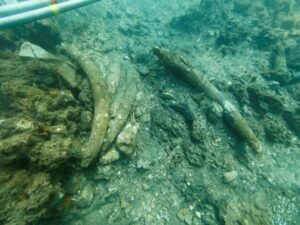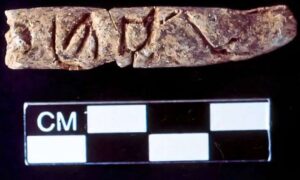A group of archaeology enthusiasts deep in interior England set out to dig up a local legend with low reserves of everything except desire — and succeeded.
The Collyweston Historical and Preservation Society (CHAPS) has located a Tudor palace buried beneath their Northamptonshire village. Called Collyweston Palace, the building belonged to King Henry VII’s mother, Lady Margaret Beaufort. Its ruins are at least 500 years old.

Photo: CHAPS
The 70 to 80 civilian scientists at CHAPS succeeded whereas many past efforts throughout the 1980s and ’90s failed. And they didn’t do it with copious resources.
A local myth
“Many of us were brought up in the village, and you hear about this lost palace, and wonder whether it’s a myth or real. So we just wanted to find it,” CHAPS chair Chris Close told The Guardian. “But we’re a bunch of amateurs. We had no money, no expertise, no plans, no artist impressions to go off, and nothing remaining of the palace. It’s naivety and just hard work that has led us to it.”
In its time, Collyweston Palace was a thing to behold. Margaret Tudor and James IV of Scotland held their 1503 rehearsal dinner at the palace, and Henry VIII is recorded as holding court there in October 1541.
But it faded from prominence, leaving little trace of its former stature by the mid-17th century.
Little remained of the ruins, which is part of the reason why it took CHAPS five years to find them. The team used geophysical surveys, ground-penetrating radar, and permission from homeowners to excavate in gardens along the way, The Guardian reported.
Despite the advanced techniques in play, anecdotes and folk knowledge guided their search and ultimately led to the find in a backyard.
View this post on Instagram
The University of York helped verify the results. But the society’s work isn’t over. The small team will continue to scrutinize radar data throughout 2024 to discover more about the building’s layout and what occupants used it for. Its next report is due next September.
Shoestring budget
According to Close, they’re well under budget — or, they would be if they were a conventional operation.
“We’ve done it all on an absolute shoestring,” said Close. “We’ve done an £80,000-£90,000 project for roughly £13,000. For us, being a little society, to have achieved this with no money, or expertise, or plans, I think it’s something that the whole society should be proud of.”






